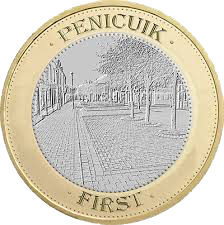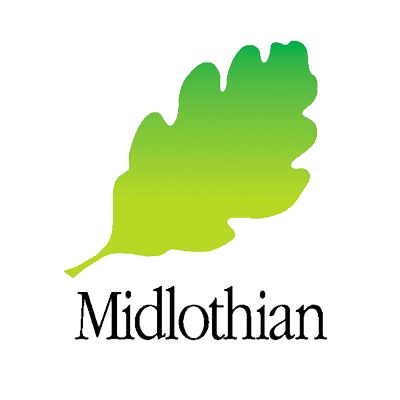Penicuik: The Victorian Holiday Destination
(A PDF version of this article, as well as Penny Toons telling, can be downloaded below)
Over 120 years ago in May 1900, John P. Thompson of Penicuik Chemist published a ‘Handy Guide to Penicuik and Neighbourhood’. Including an in depth itinerary of the town, a note of Penicuik as a summer resort and extensive notes of district drives amongst other sections filled with information of the dynamics of the town. According to Thompson himself, the guide was in high demand on the date of publication. Whilst the factors behind the decision to create the Handy Guide are not quite certain, it is likely Thompson had been commissioned to create this resource due to his status as a trusted member of the community. The resource praises the town of Penicuik, branding it a health resort of sorts due to the extensive greenery within the surrounding area. The town is also praised for outstanding transport links heralding it a key social hub outside of the hustle and bustle of Edinburgh city.
The surrounding land of Penicuik was noted as ‘fertile and richly wooded, and dotted here and there with mansion houses, many of them possessing historical associations’. This notion suggests the town provided an idyllic getaway to enjoy nature. This is particularly interesting as Thompson goes on to express with pride the exceptionally low death rate within the town, which he seems sure is certainly not just a coincidence. The guide explains the source of these figures emerged from the Vice-Chairman of the Parish church, Mr R.J. Henderson, who suggested the death rate within Penicuik was the lowest per 1000 of the population in Scotland, with the exception of North Uist in the Hebrides and Newhills in Aberdeenshire. 2 This interest, sparked by the Henderson’s own personal intrigue is particularly valuable in addressing Penicuik’s historical reputation as a summer resort encouraging healthy living and an opportunity to escape the busy city landscape. The guide seems to be aimed directly at visitors of the town, most likely those who have never visited before, however a clear element of pride in the landscape of the town is prominent within the pages of the guide, suggesting locals would have been interested in accessing Thompson’s Penicuik Handy Guide themselves.
Due to the purity of air and as a result, a high life expectancy for members of the community, Penicuik was praised with the possibility of becoming a summer health resort. The Handy Guide emphasizes the health benefits of residing in Penicuik as Thompson notes, ‘the military authorities were quite aware of the healthiness of the district, as it had been found that sick soldiers sent from Edinburgh Castle and Leith Fort to the hospital at Glencorse recover in a surprisingly short space of time’. The town in 1900 presented an abundance of favourable living conditions and it is likely key members within the community such as Thompson would have been extremely keen to share this with guests to Penicuik.
Much like any old Scottish town, the buildings themselves within Penicuik convey the historical narrative of the community, acting as physical markers which tell the story of the town. A prime example of this within the guide is Thompson’s recognition of the paper mill which became a defining factor of the community. Thompson’s ‘Itinerary of the Town’ within the Handy Guide states to the right of Woodslee House are ‘the extensive paper mills at Valleyfield, belonging to Messrs A. Cowan and Sons Ltd., where paper making has been carried on since 1708’. Within the Parish churchyard, at the Southern wall, lies a memorial stone commemorating ‘the internment at Penicuik of 309 Frenchmen who died during their detention as prisoners of war’. These 309 French prisoners of war were detained within the buildings of the Valleyfield Paper Mills between 1811 and 1814, throughout the Coalition Wars. This is an excellent example of the underlying history of Penicuik and the role this town has played within a larger historical framework such as the Napoleonic Wars.
At the entrance to the cemetery, which ‘besides possessing a mournful interest as the burying-place of the greater number of victims of the Mauricewood Pit disaster (September 1889), is the vantage ground if an unrivalled view of the Pentlands and surrounding country’(12). The Handy Guide encompasses the history of the town, providing a physical documentation of community tragedies alongside the beautiful landscape which the town resides in. All these years on, Thompson’s documentation of the town is still extremely valuable with the Penicuik Regeneration Project working to maintain these sites of historical value. The town has close associations with Robert Burns, Sir Walter Scott and Allan Ramsay amongst other eminent writers, it is really no surprise Penicuik was considered a fantastic holiday destination at one point! These prominent associations are marked in the guide when Thompson quotes Robert Louis Stevenson, ‘On the way the new Church of Glencorse will be passed, but for many, the interest will centre around the ‘picturesque ruin’ of the old Church:
‘Dear olden Church! and memories that wait,
And stand white robed, like angels in the aisle!’
of Robert Louis Stevenson who was a frequent worshipper within its walls’
The purpose of Thompson’s guide is undoubtedly to promote the town of Penicuik and to encourage town morale alongside a sense of community. The guide is now recognized as a valuable resource to analyse the history of Penicuik and offers insight into the many various social elements of the town’s foundations in 1900. In many ways, Thompson’s Guide forces us as readers and as community members of Penicuik to consider how we view the town today. The importance of these sites as physical markers of the town’s history is undeniable, however the importance we place on restoring the sites and protecting the story of Penicuik falls on to ourselves.




